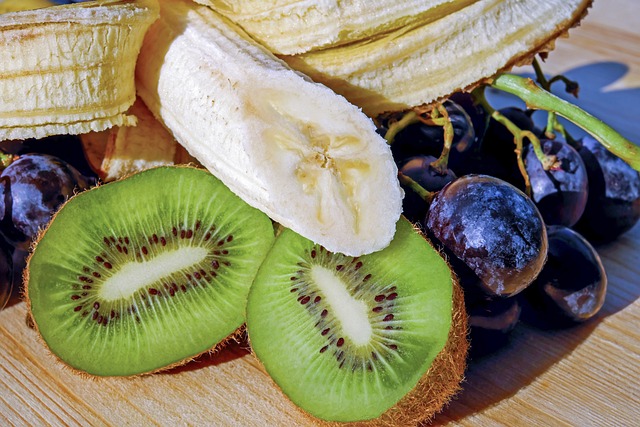Glycogen is a type of glucose that your body uses to store energy, primarily in your liver and muscles. Carbohydrates from food are required by your body to generate glucose and Glycogen.
Glycogen is a stored form of glucose composed of several linked glucose molecules.
Glucose (sugar) is the primary source of energy in your body. It is derived from carbs (a macronutrient) found in certain foods and fluids. When your body does not require glucose from the food you consume right away for energy, it stores it as Glycogen in your muscles and liver for later use.
The process through which your body generates Glycogen from glucose is known as glycogenesis. Glycogenolysis is the process through which your body breaks down Glycogen for usage. These two steps are carried out by a variety of enzymes.
An enzyme is a protein found in cells that serves as a catalyst, allowing certain biological processes to occur. Thousands of enzymes perform vital tasks throughout your body.
What exactly is the distinction between Glycogen, glucagon, and glucose?
Glycogen, glucose, and glucagon are all related to how your body uses carbs as its primary source of energy, yet they all serve various purposes.
Carbohydrates in meals provide you with glucose. Blood sugar is where the main sugar found in your blood. This sugar is a good source of energy and contains nutrients for your organs, muscles, and nervous system.
Glucose is critical because it is your brain’s principal source of energy. In fact, your brain’s ongoing need for glucose is the fundamental reason that the current RDA for carbs for all adults is at least 130 grams per day.
When your body does not require glucose immediately, it stores it in the form of Glycogen in your liver and muscles.
Glucagon is a hormone produced by your pancreas that causes Glycogen to be converted back into glucose and enter your bloodstream, where it may be used for energy by your body. The primary natural hormones that govern your body’s blood glucose levels are glucagon and insulin.
Is Glycogen a type of carbohydrate?
Glycogen is derived from carbs (a macronutrient). However, it is not a carbohydrate. When you eat or drink carbohydrates, your body digests them and converts them to glucose, which it can then use as fuel. Glycogen is a type of glucose that is stored in the body. It is made up of several linked glucose molecules.
Where does Glycogen get stored?
The majority of Glycogen in your body is stored in your liver and skeletal muscles (the muscles related to your bones and tendons), with a small amount in your brain.
Although your liver stores a higher proportion of Glycogen than your skeletal muscle, because your total muscle mass exceeds that of your liver, your muscles contain around three-quarters of your body’s total Glycogen.
The Glycogen in your muscle cells can be significantly depleted during vigorous and extended exercise, but the level of Glycogen in your liver cells changes throughout the day depending on a variety of circumstances, including the number of carbohydrates you consume.
- The amount of time between meals.
- The duration and intensity of recent physical activity.
- After 12 to 24 hours of fasting, liver glycogen is virtually completely depleted.
What is the purpose of Glycogen?
Glycogen serves diverse roles and serves different purposes depending on where it is stored: in your muscles or in your liver.
The role of glycogen reserves in the liver
Your body primarily uses glycogen storage in your liver to assist in controlling blood glucose (sugar) levels.
Normally, your body carefully manages your blood glucose levels using the hormones glucagon and insulin. Your pancreas produces more glucagon when your blood glucose levels go too low (hypoglycemia).
Glucagon causes Glycogen in your liver to be converted back to glucose so that it can enter your bloodstream. This is known as glycogenolysis. When glucose is present in your bloodstream, it can be used for energy by cells throughout your body.
Glycogen stored in liver also contribute to muscle activity and exercise. Your liver begins breaking down Glycogen at the onset of exercise to maintain blood glucose levels while your working muscles use it for energy. Your muscles, on the other hand, mostly rely on their own glycogen stores to perform.
Muscle glycogen storage function
Muscle glycogen is primarily used as a source of metabolic fuel by your muscles.
In order for you to move, your muscles require a lot of energy to perform. If your muscles were to rely on glucose from your bloodstream for energy, your body would quickly run out.
As a result, your body stores three-quarters of your total Glycogen in all of your skeletal muscles, ensuring that they have a steady supply of energy, especially during exercise, without significantly influencing your blood glucose levels.
The rate at which your muscle glycogen depletes is primarily related to the intensity of your physical activity – the higher the exercise intensity, the faster your muscle glycogen depletes. As a result, even though the total time of exercise is short, high-intensity activity, such as repeated sprinting, can rapidly deplete glycogen stores in active muscle cells.
When you consume enough carbohydrates, your muscles replenish with Glycogen.
What happens to your glycogen levels while you exercise?
Athletes are physically tired, thirsty, and emotionally exhausted after strenuous workouts. As a result, a recovery diet must focus on three major objectives: refuel, rehydrate, and repair and develop.
These objectives are met by replenishing critical nutrients, rehydrating and restoring electrolyte balance, rebuilding damaged muscle tissue, and reducing excessive inflammation. Athletes must recover in order to perform at their best when training.

Refueling
Athletes must evaluate when, what, and how much to eat and drink after strenuous exercise—essential components of a recovery nutrition plan. The sport, training program, the athlete’s health, body composition, size, performance, and physical conditioning all influence how much to drink and what to eat. The timing of nutrients in the body is referred to as “nutrient timing” for all three components.
The first 30 minutes after exercise are the most responsive to nutrient intake. Although this metabolic window of opportunity closes with time, certain types of exercise, such as strength training to the point of muscular exhaustion, can keep it open for up to 48 hours.
Athletes must be aware of what they take and when they consume it. Physical training occurs in brief bursts, but the dietary component of a training program must extend throughout the day and involve the replenishment of many nutrients to facilitate post-exercise recovery.
Replenishment of Glycogen
Glycogen is the fuel source that athletes must replenish after severe exercise, which is stored in the muscles. During prolonged durations of aerobic exercise, muscle glycogen is the primary fuel source. In fact, aerobic performance is closely tied to glycogen storage at the start.
As glycogen stores are exhausted, athletes become weary, and their performance suffers. When ingested soon after an exercise, high-glycemic carbohydrate items such as white bread, dextrose candies, or maltodextrin supplements will restore glycogen stores because muscle tissue is sponge-like and will quickly absorb glucose from the high-glycemic carbs.
Anaerobic exercise is likewise almost exclusively powered by carbs. During anaerobic exercise, there isn’t enough oxygen available to use the oxidative pathway required to burn fat for fuel. As a result, if glucose is scarce, the body will turn to protein for sustenance.
Without enough glucose, glycogen levels decline dramatically during both aerobic and anaerobic activity, potentially affecting subsequent performance. While some athletes may claim that they can function with lower carbohydrate amounts than is normally recommended for them, there is a distinction to be made between functioning and performing optimally.
Coaches frequently note that athletes on low-carbohydrate diets fatigue faster and make more cognitive errors.
Electrolyte and hydration balance
Athletes’ fluid and electrolyte losses after hard workouts vary. Therefore, it’s critical for them to monitor the quantity and color of their urine to determine their hydration status. The urine color should be clear, and there should be plenty of it.
By weighing athletes before and after training, coaches can keep track of fluid losses. Fluid losses should not be more than 2% of body weight. If they do, it indicates that the athlete is not maintaining a safe level of hydration. Athletes should consume 20 – 24 oz of liquids for every pound of fluid lost.
Also, sodium should be included in post-workout fluids or meals, especially for athletes who sweat a lot. Sodium losses in sweat ranged from 172 – 1,139 mg/lb of sweat in football and soccer players, according to research. 9-12 Athletes can consume sodium-containing sports drinks or water in conjunction with a sodium-containing meal.
Repair and construction
Training boosts circulating catabolic hormones to facilitate the breakdown of Glycogen and fat for fuel, in addition to fluid and electrolyte losses. These hormone levels remain elevated following exercise and continue to degrade muscle tissue.
Without nutritional intake, this catabolic cascade can last for hours after exercise. Which can cause muscular pain and potentially jeopardizing training adaptations and level of performance.
Athletes must refuel with high-protein diets immediately following exercise, especially resistance training, to repair and develop muscle. To boost muscle protein synthesis, they should ingest 20 to 40 g of protein in each serving, with 3 to 4 g of leucine.
While studies have demonstrated that 20 g of whole egg protein can increase muscle protein synthesis in young, healthy males. Some studies show that higher levels are required in athletes over the age of 71. FYI., an egg has approximatelly 6 grams of protein.
Furthermore, because of its amino acid makeup and the rate at which amino acids are released into the bloodstream, whey is an excellent post-workout protein. While it is critical to fill the body with protein and amino acids immediately following exercise, athletes should consume protein on a daily basis to drive whole-body protein synthesis until muscle failure, which sensitizes muscle tissue to protein for up to 48 hours after exercise.

Many athletes ignore the necessity of carbohydrate intake for muscle development and repair. Carbohydrates can reduce muscle protein breakdown.
Athletes who engage in resistance training benefit from consuming carbohydrates and protein after intense workouts. Comprehensive nutrition shakes assist athletes in rehydrating while also supplying carbohydrates and protein post-workout.
Reduce Excess Inflammation
Researchers investigated numerous products and components to help reduce excessive inflammation and muscular discomfort. Tart cherry juice and ginger (fresh or heated), in particular, have been shown to reduce eccentric-exercise-induced inflammation and delayed onset muscle pain.
According to research, the flavonoids and anthocyanins in sour cherries are involved in inflammatory suppression. Many chemical elements of ginger, such as gingerols, shogaols, paradols, and zingerone, have been discovered in vitro to limit the synthesis of inflammatory chemicals and inhibit enzymes that promote pain and inflammation in the body.
Particular Considerations
While recovery nutrition has three primary purposes, how these goals are met depends on the sort of sport that the athlete participates in. Nutrition advise for athletes are classified into two groups based on sports science research: endurance sports and resistance training.
These categories, however, do not address the gray regions of nutrition requirements for athletes who participate in team sports. Team sports training intensity and the consequences of training can vary and range dramatically among players on the same team.
A sports nutritionist can create tailored regimens for each athlete, taking into account training adaptations, changes in development and body composition, injuries, illness, and training phase.
To Conclude
Glycogen is necessary for regulating blood sugar levels and providing energy for exercise. Thankfully, problems with your body’s ability to produce and utilize Glycogen are uncommon.
The critical thing you can do for your glycogen levels, especially if you’re an athlete, is to consume adequate carbohydrates every day. If you have doubts regarding your diet and exercise objectives, see your healthcare physician or a licensed dietitian or nutritionist.

